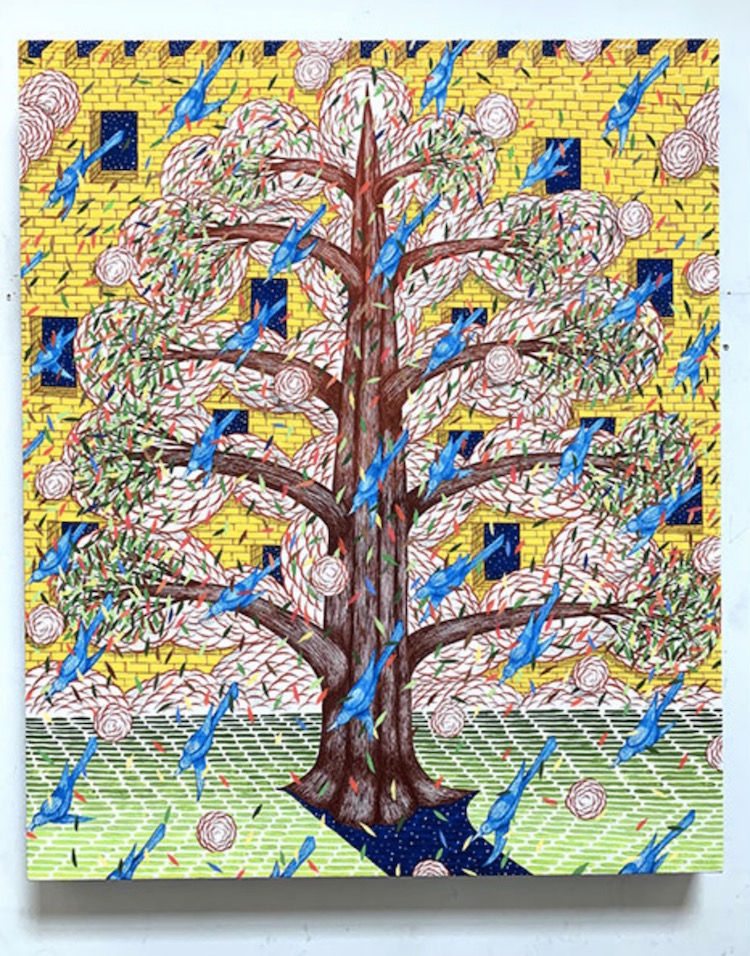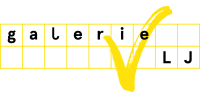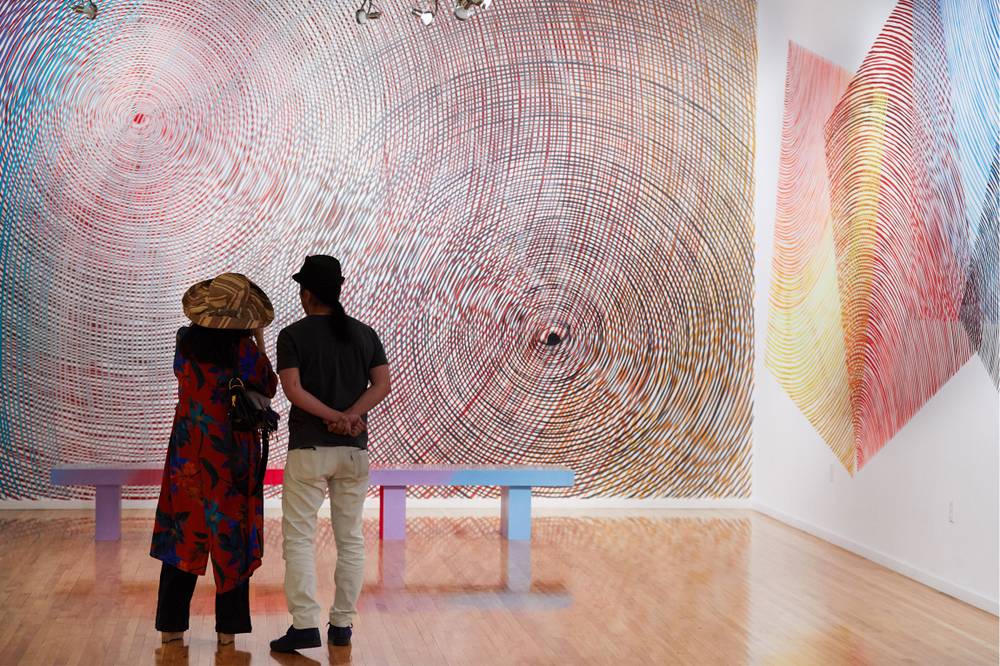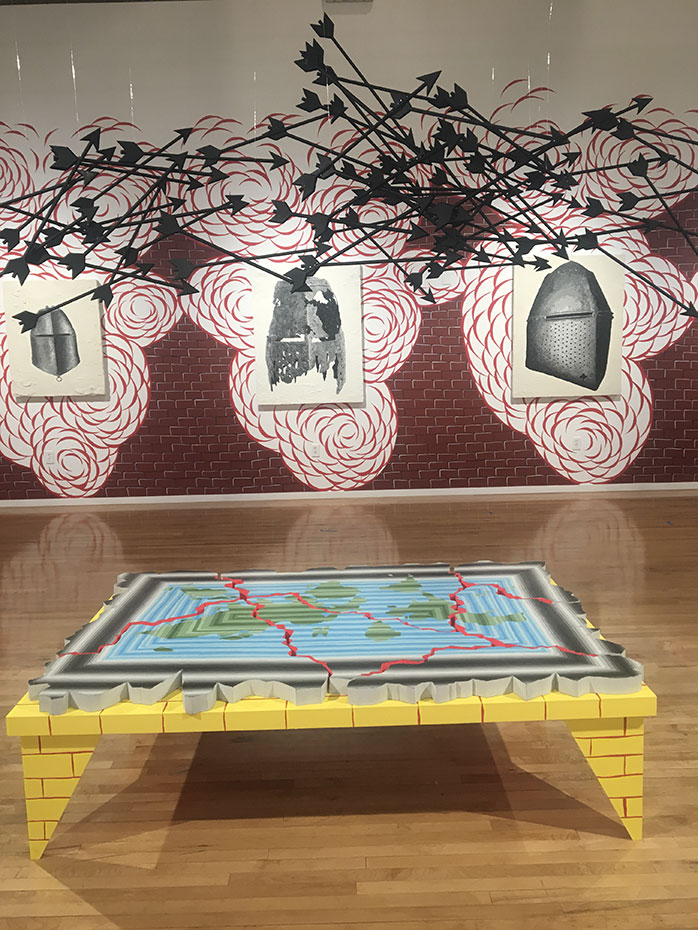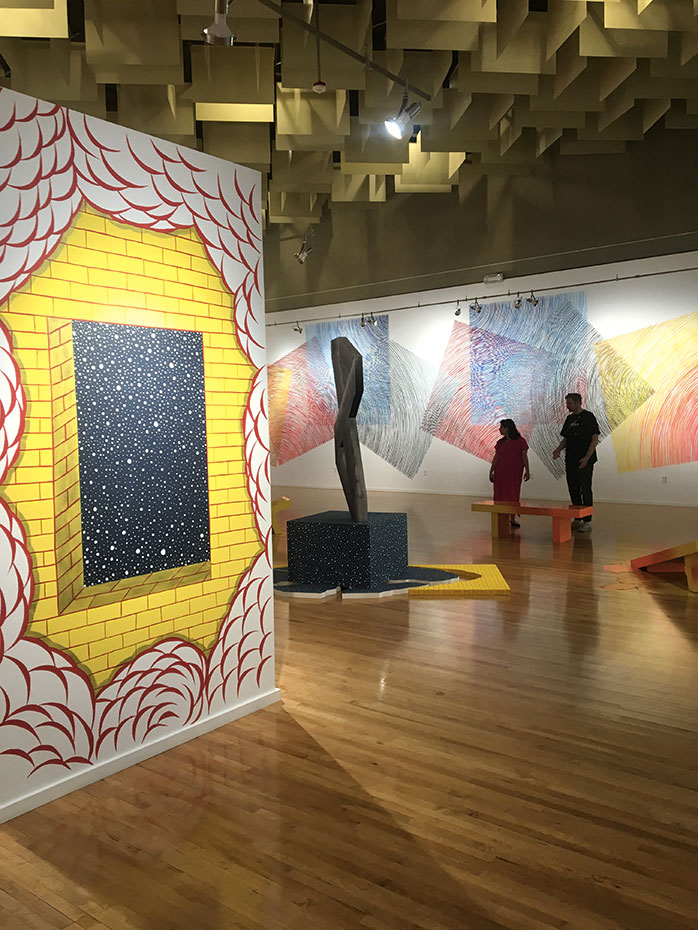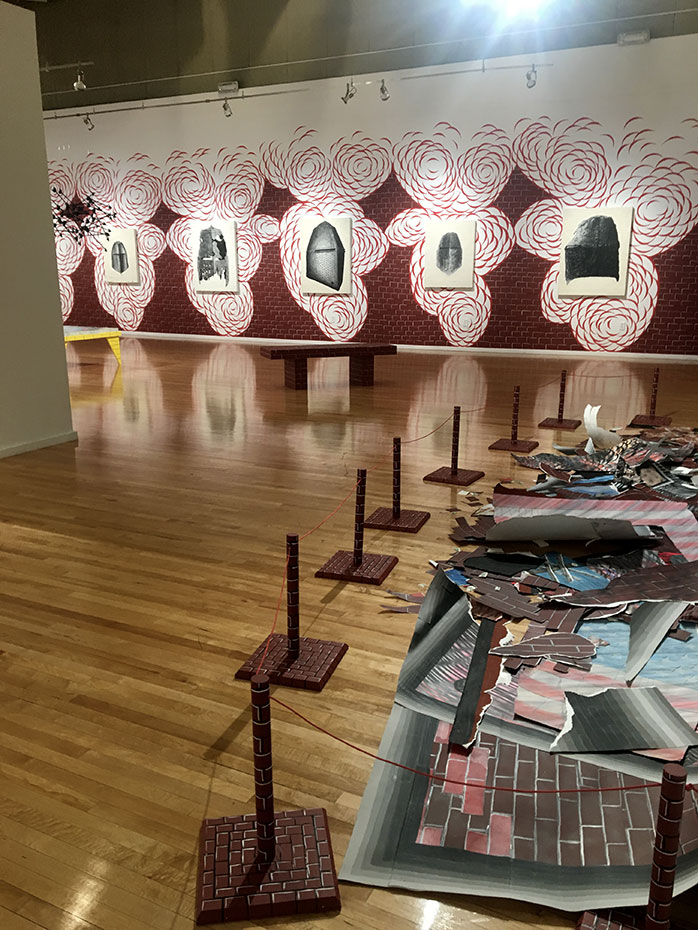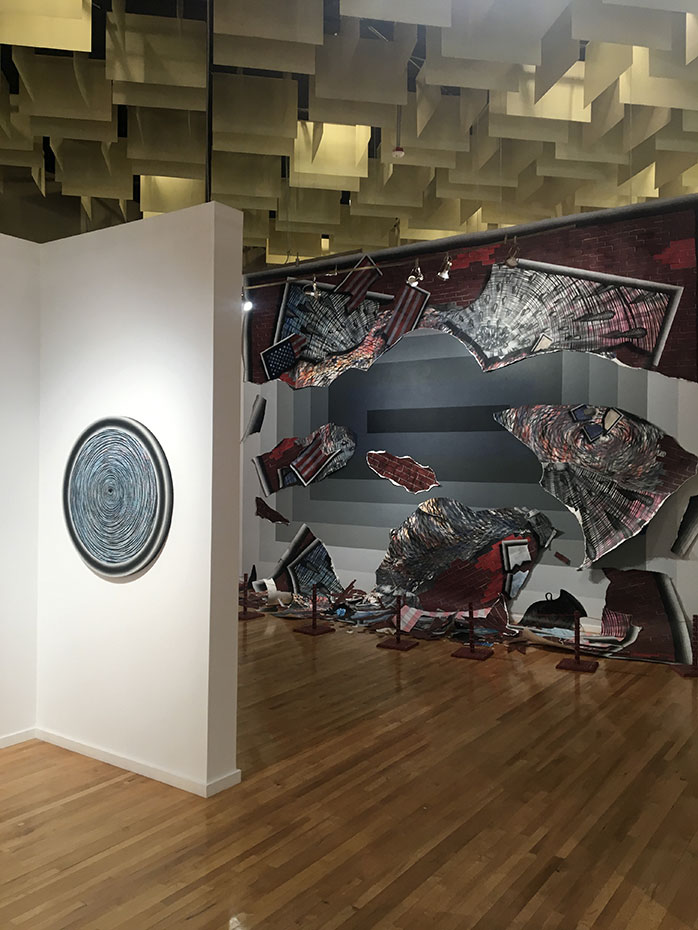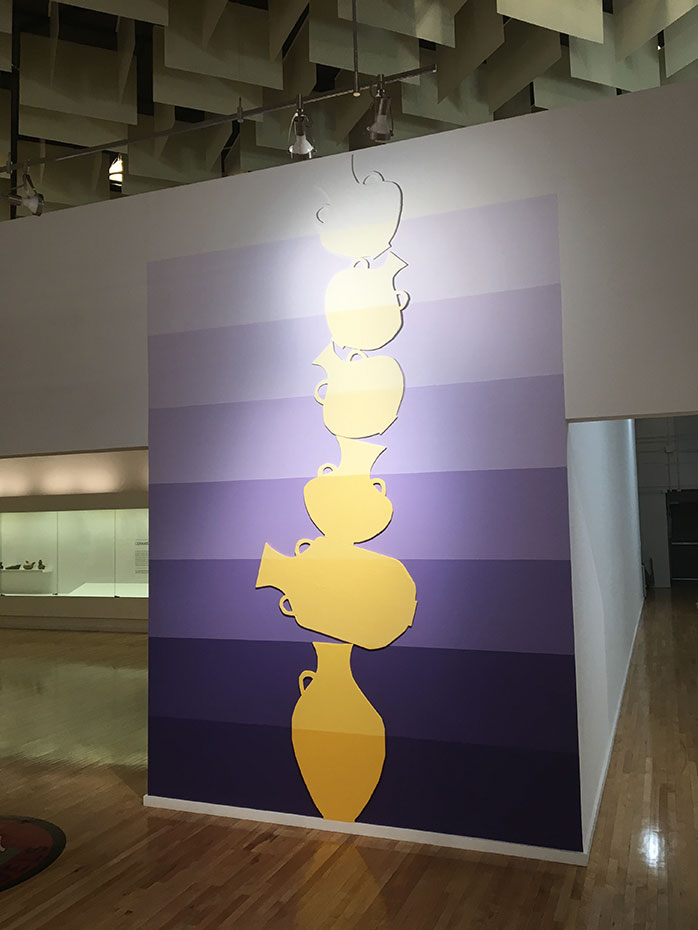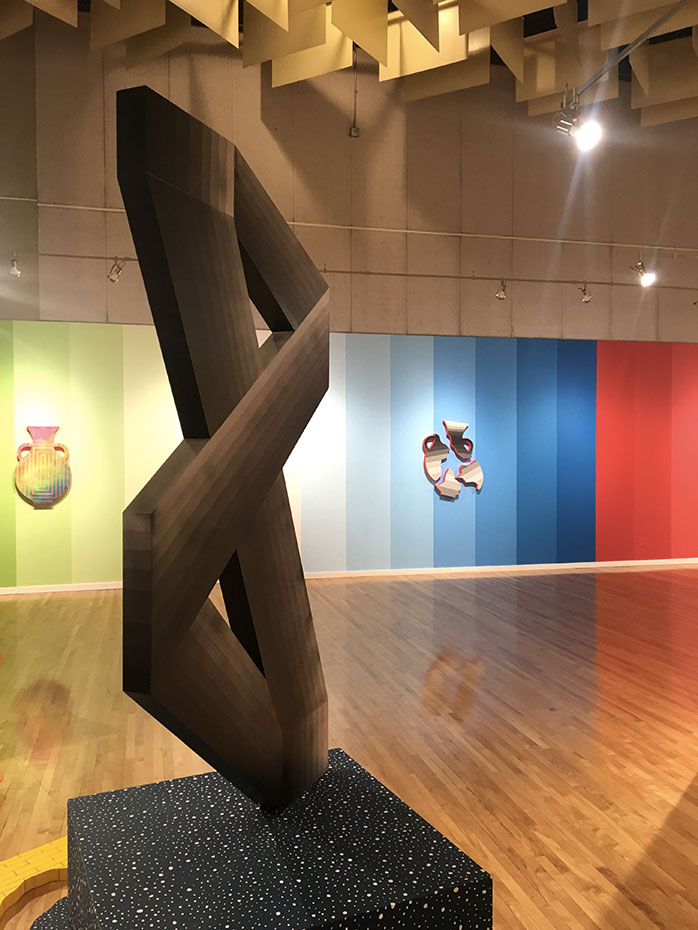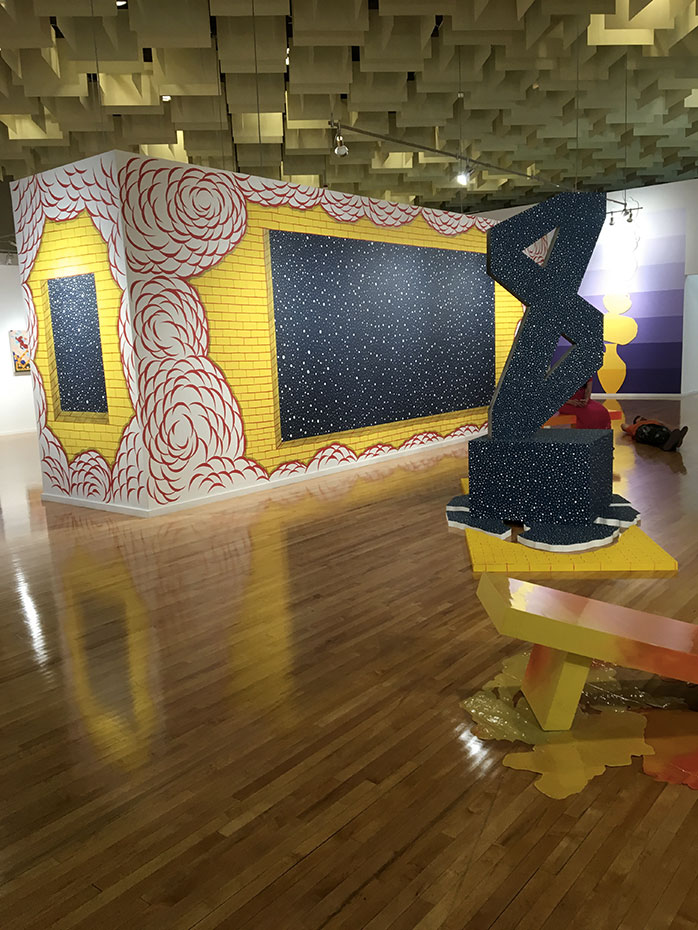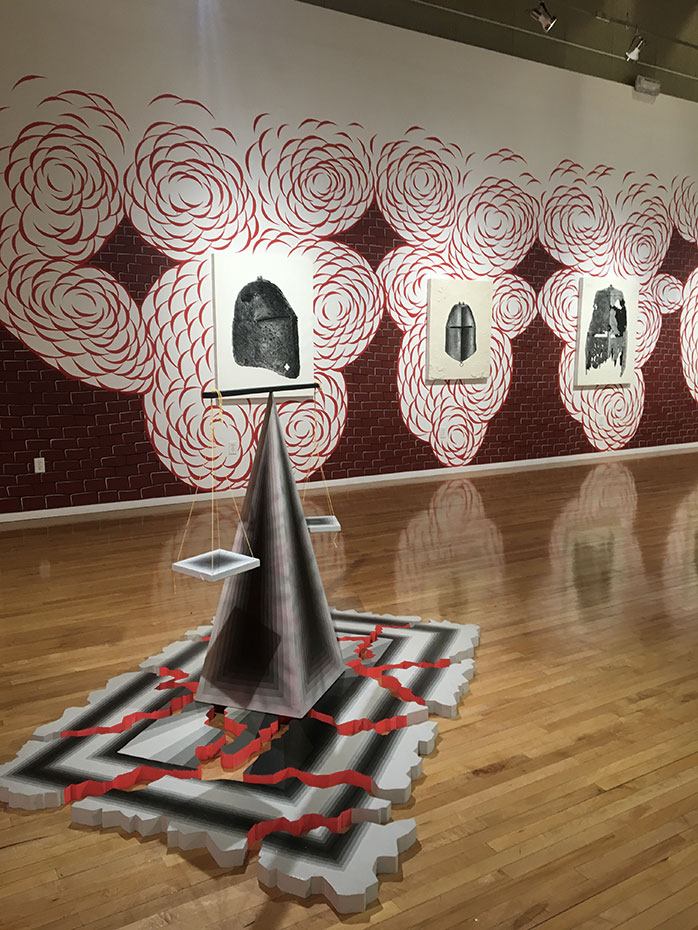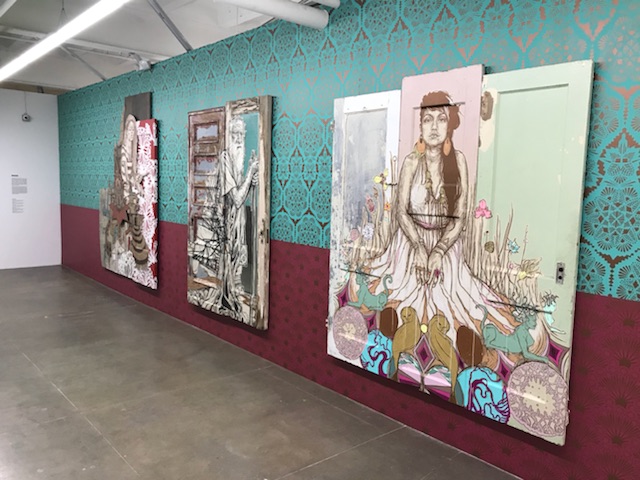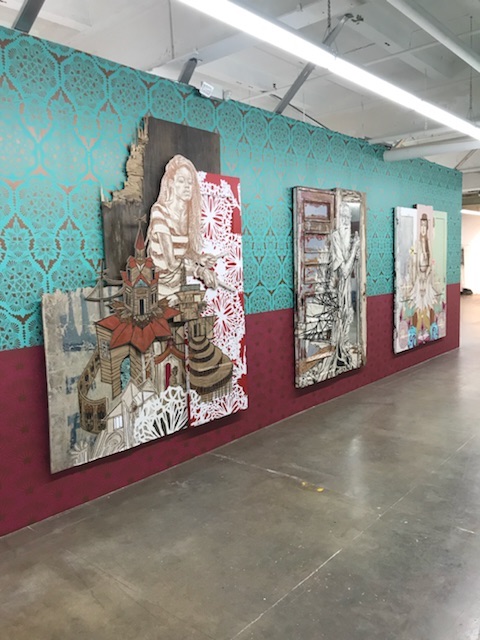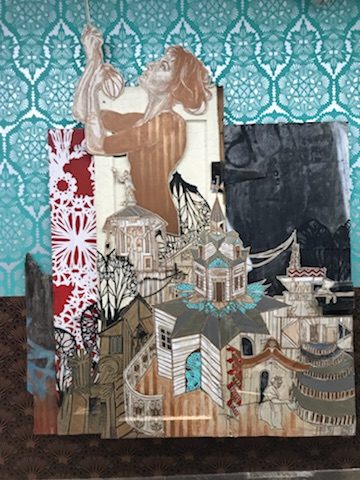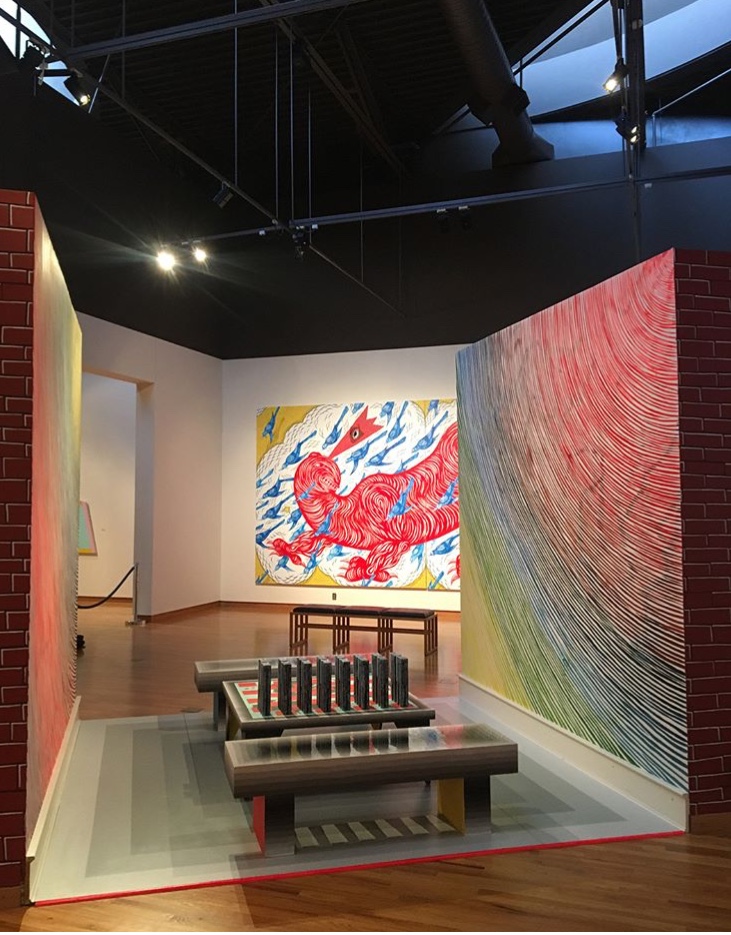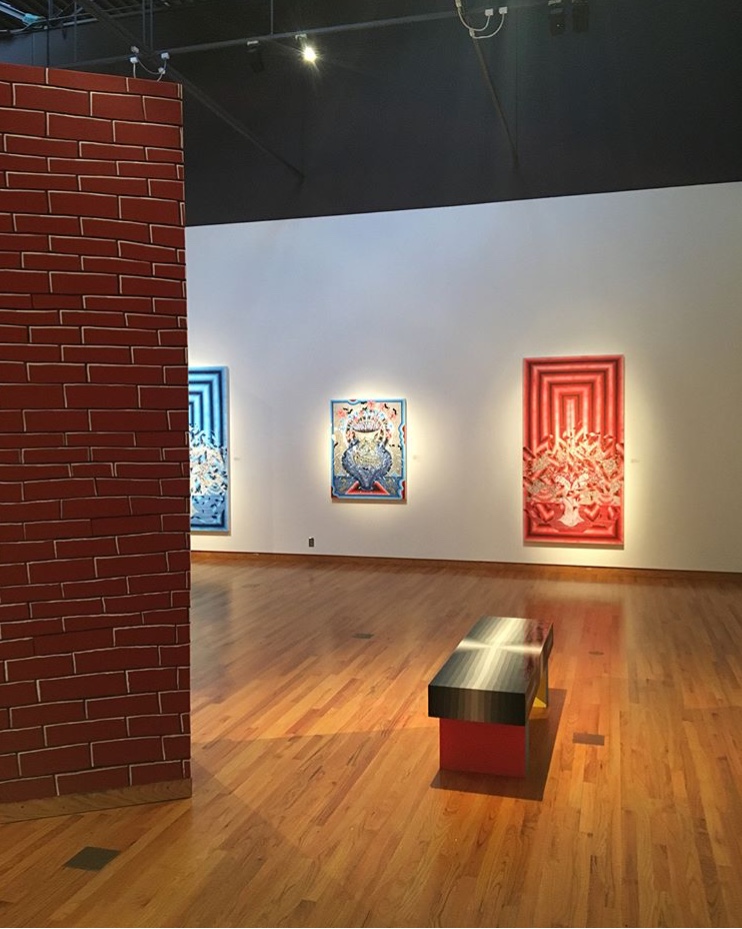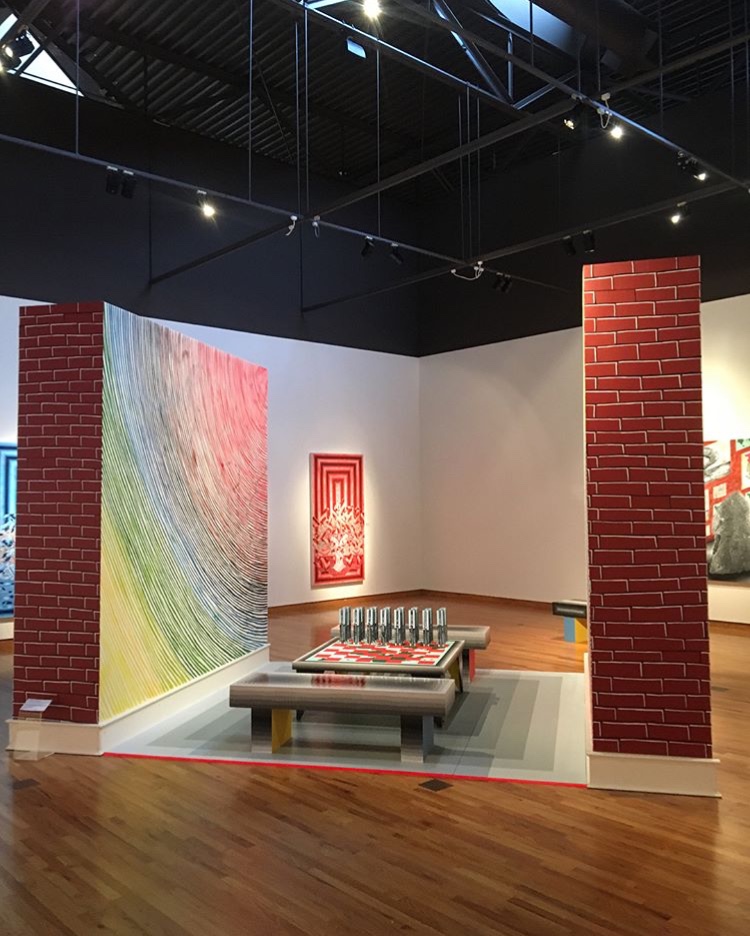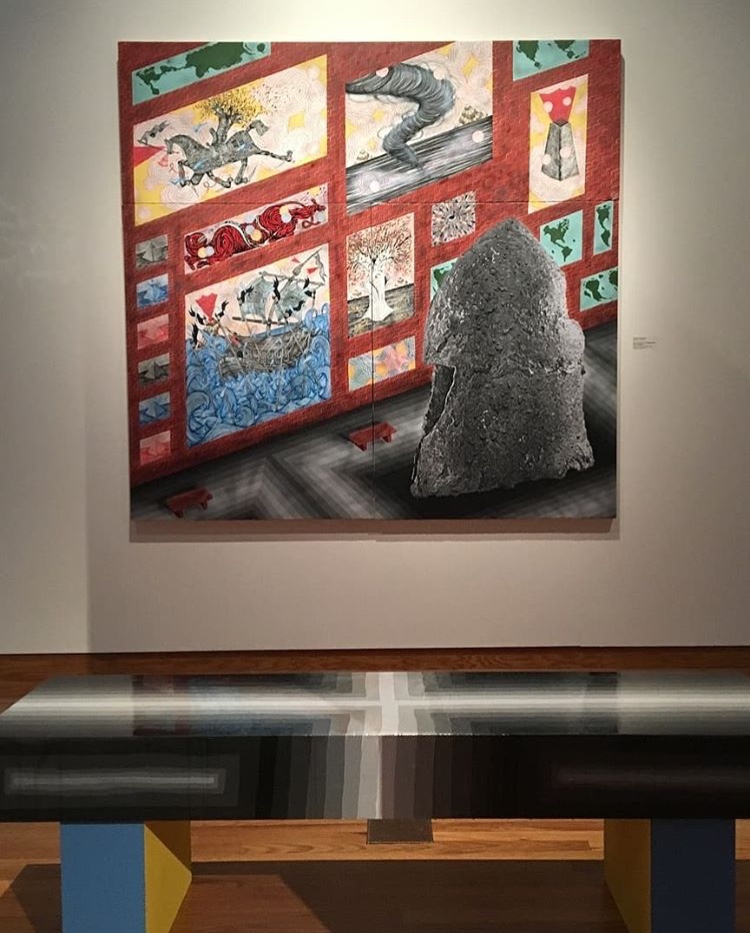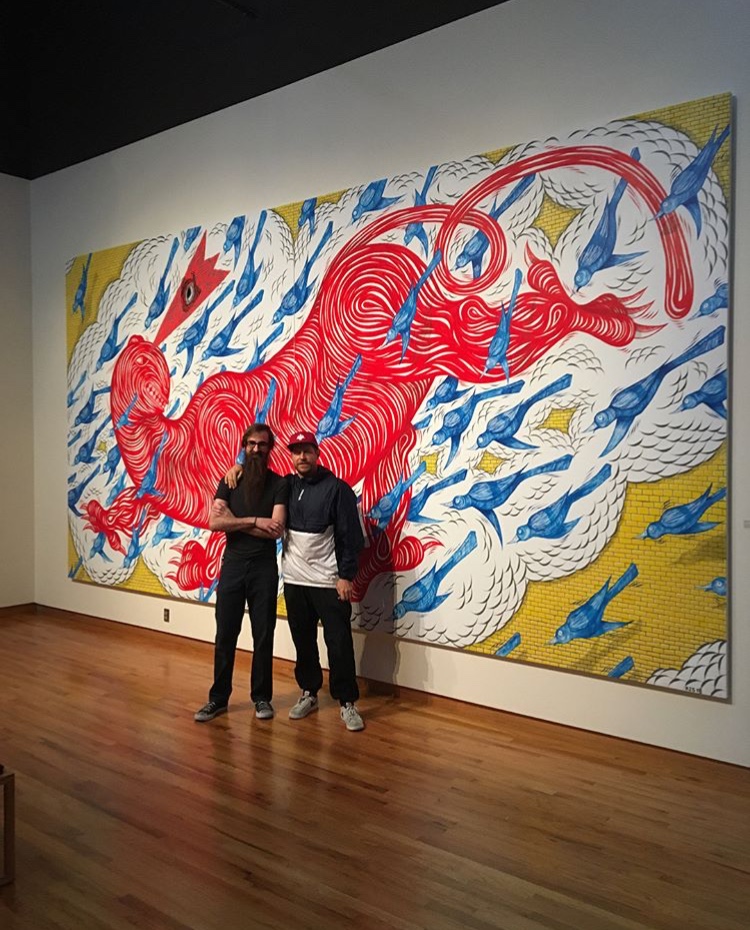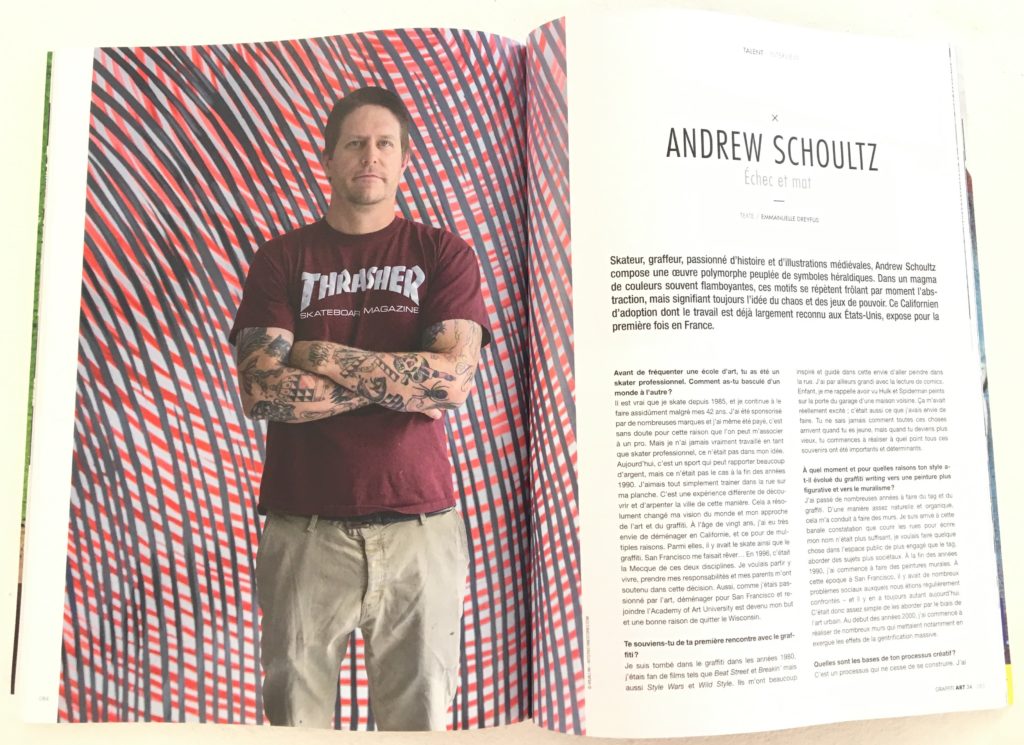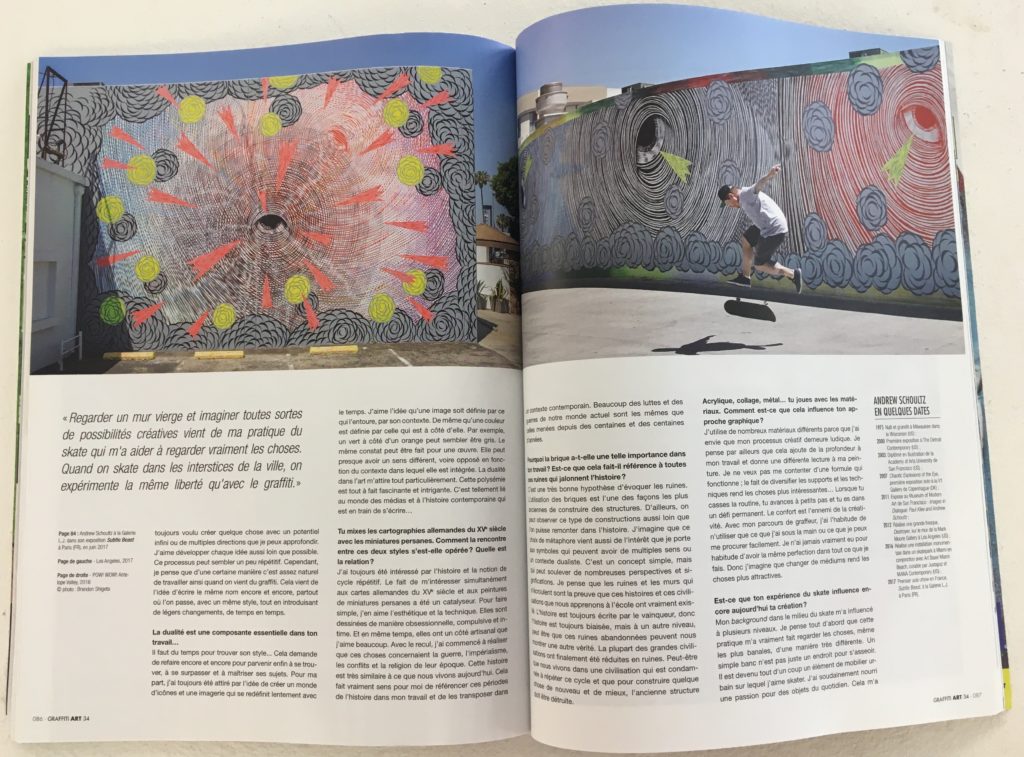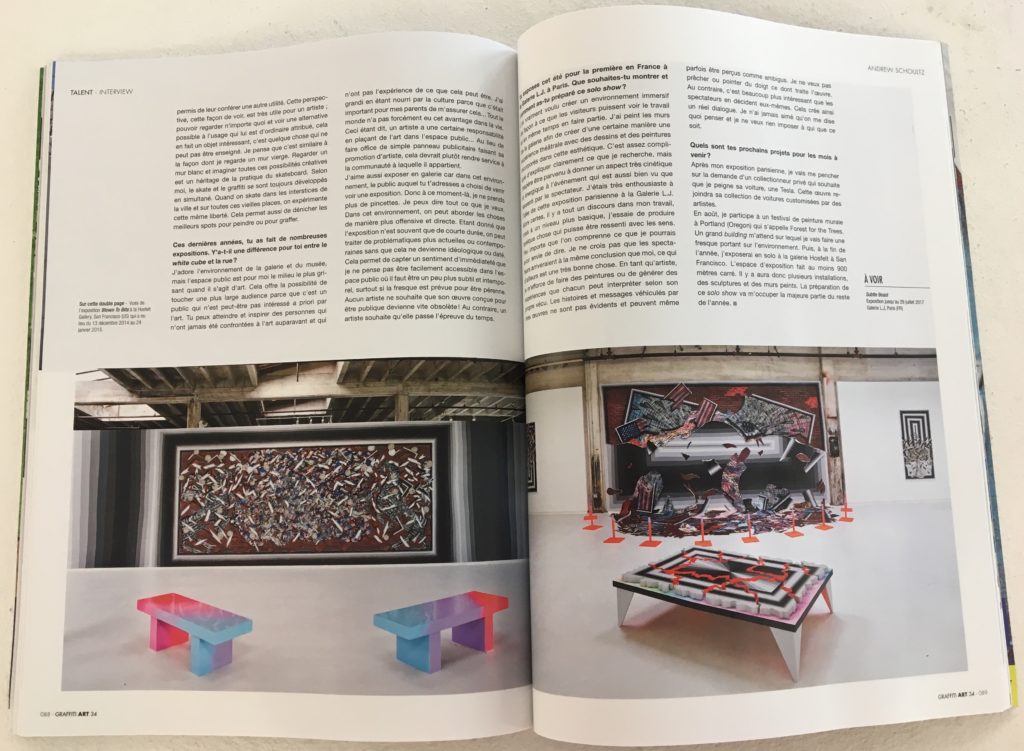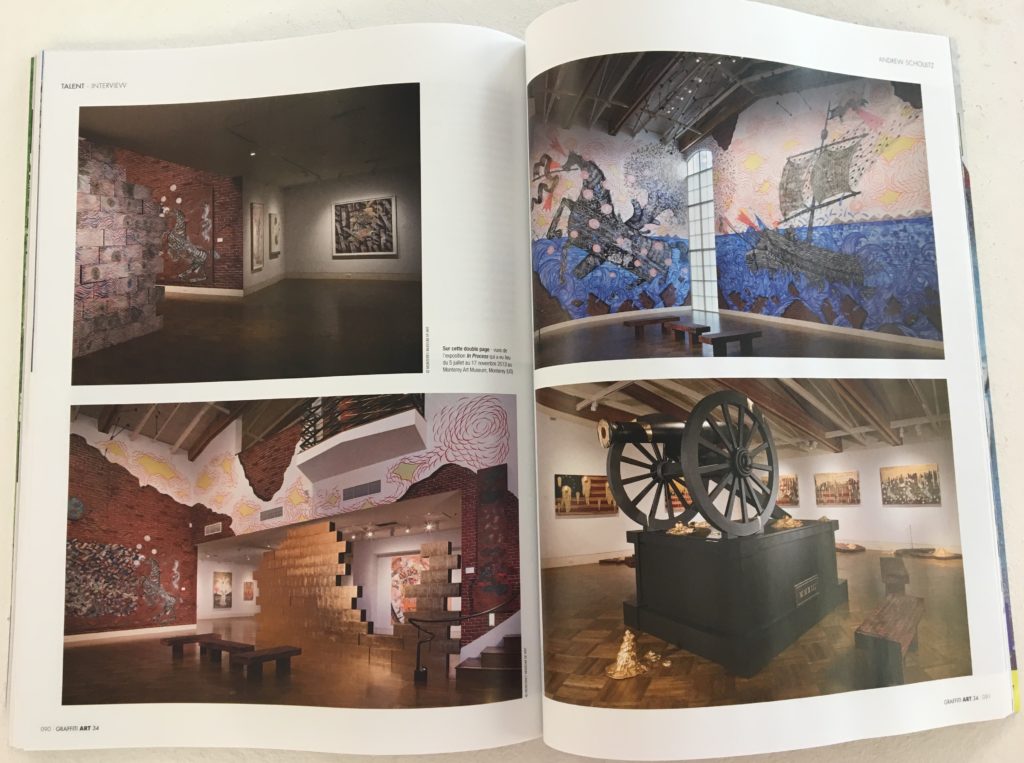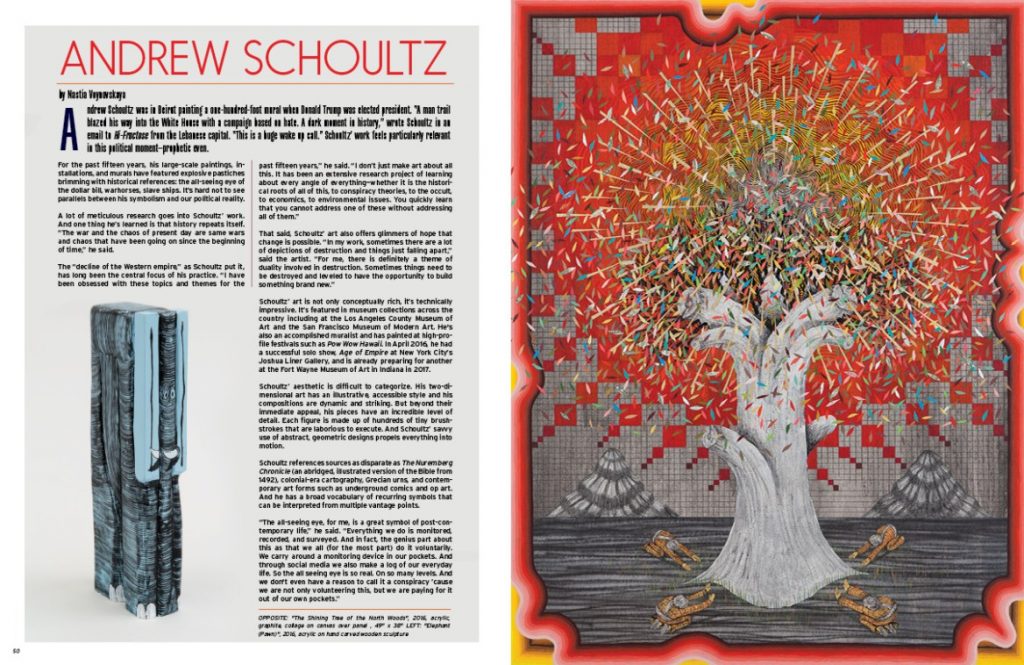
Beast in Space (Floating), 2017, acrylic on paper, 30 x 22″
Andrew Schoultz traffics in socially conscious abundance. With seemingly unstoppable verve, he makes large-scale wall works, paintings, and architectural installations that burst with vibrant color and concentric shapes that sometimes generate dizzying moiré patterns. There are recurring motifs in everything in his expansive exhibition at Hosfelt — a show that fills the cavernous gallery as well as the hallways with works mostly made in 2017. In his paintings there are ferocious four-legged red beasts; flocks of birds that appear to be dive bombing, in formation, into the abyss; coils of fluffy clouds that suggest missile contrails; various vortexes; stylized Greek urns; brick walls; sinking ships and Trojan horses. All of which is to say, this energetically apocalyptic body of work is ripe for the times.
The aforementioned motifs are rendered in a merger of old master style drawings, illuminated manuscript images (perhaps the source of the show’s title, Illuminated Opposition) and bursting fluorescent psychedelics, which generally give the works a timeless quality. Emerging as a San Francisco street artist in the early 2000s, his work has evolved and fluctuated in scale, but his vision is consistently grand. This befits the large themes of failing capitalism and cultural collapse. Those ideas are depicted most literally in one of the first works, Sinking the Green, a
Sinking in the Green, 2017 acrylic and approximately $8,000 in shredded U.S. dollars on canvas 35 3/4 x 35 3/4 inches
 |
wooden ship, rendered with dense line work, being sucked into a whirlpool. The greenish tone of the water is articulated with shredded U.S. dollars — approximately $8,000 worth according to the exhibition checklist. It’s capital, decommissioned, reduced to paper, and powerless as it is whooshed into a black hole.
This literal use of materials seems like an old gesture for Schoultz, but the issue it addresses is certainly an ongoing one. As with his last show at the gallery, Blown to Bits, (2014), the artist adds in other concerns and approaches, and here again he does so profusely.
I was taken by a repeated new motif of a Muslim man at prayer who appears in various guises in three works, the most flamboyant being the self-descriptive Bowing Man in Technicolor Southpark Robe. Schoultz shows this turbaned figure clad in pajamas festooned with cartoon characters like those Target sells as TV tie-ins. It’s a childlike, humiliating garment that seems a symbol of American boorishness. The prayer carpet is composed of concentric gray rectangles that make the man appear to be levitating in a child’s pose of reverence. Across the gallery, a
Beast, Tree, and Bowing Man, 2017, acrylic on canvas on panel, 12 x 9 inches
 |
much smaller work, Beast, Tree, and Bowing Man,shows a similar figure bowing before a tiger-like beast. The character is encircled in concentric forms that create a kind of wormhole. Only his hands are visible, palms extended in the manner of a superhero unleashing a potent force — in this case the ever-present birds.
These three works suggest a surrealistic struggle that’s clearly rooted in political conditions in the current American regime, and it’s persistent Islamophobia. There isn’t, however, an explicit message to these works; instead, they create binds between mystical and political imperatives. This also occurs in the installation-based works in the show, starting with a fluorescent green wall with two large expanses that together create an unsettling moiré. The scale emphasizes sense of static electricity, recalibrating a viewer’s equilibrium from the start. Room With a View, 2017, a jail-cell-sized structure, its exterior covered with cloud-like forms on the outside and a tromp l’oeil image of an airy abyss painted on the floor, has the feel of an uncharacteristically colorful Goth playhouse. It is a space to be entered, and at the opening it was a magnet for kids who let off steam by bouncing off the interior walls.
It’s more difficult to know how to navigate Infinity Plaza (Meltdown), a grouping of shiny bench sculptures surrounding a central monument in the shape of an infinity symbol. It’s all set in front of a panoramic mural of a window facing a star-filled sky. If this is public space, its invitation is tenuous: Benches, situated on the gallery’s pristine white floor, seem to melt into puddles of paint; several are angled like skateboard ramps. Something of a lament for more true social interaction, the piece is emphatically theatrical, the elements props rather than sturdy things. What plays out here, what narrative unfolds, is up to the viewer.
Infinity Plaza (Meltdown), 2017, acrylic and epoxy resin on wood and canvas dimensions variable
 |
The show works well as an engaging environment, each work adding more detail and a sense of fullness to the whole. But what is both appealing and sometimes problematic about Schoultz’s practice is quantity. His generosity of spirit sometimes seems to stem from horror vacui — he seems to effortlessly occupy this massive space with material that sometimes overshadows nuance and the skillfulness of his line work. As noted earlier, the themes of collapse have been consistent in the artist’s work, and he has carried his signature elements along while adding in new directions. This has its appeal — an artist playing his hits in concert — but also I wondered whether Schoultz might chart a clearer path through the current chaos by focusing his output more judiciously. He certainly has the strength and resolve to picture and inspire opposition to the powers that be.
# # #
Andrew Schoultz: “Illuminated Opposition” @ Hosfelt Gallery through January 20, 2018.
About the author:
Glen Helfand is an independent writer and curator, as well as an associate professor at California College of the Arts.
